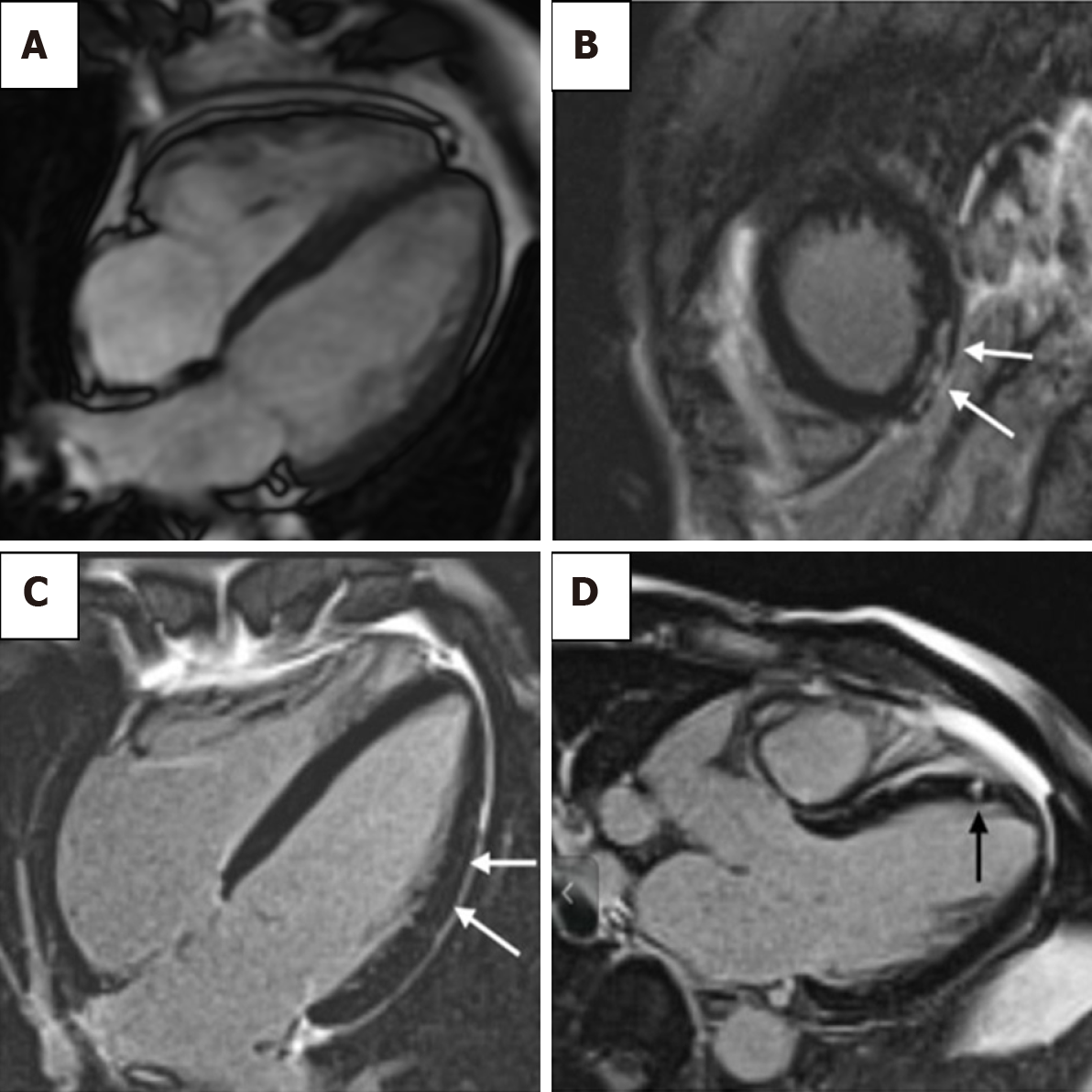Copyright
©The Author(s) 2022.
World J Cardiol. Apr 26, 2022; 14(4): 190-205
Published online Apr 26, 2022. doi: 10.4330/wjc.v14.i4.190
Published online Apr 26, 2022. doi: 10.4330/wjc.v14.i4.190
Figure 5 Cardiac magnetic resonance imaging of athlete’s heart syndrome.
A: Cardiac magnetic resonance imaging of an endurance athlete. Increased right and left ventricular volumes. Overall muscle mass may be increased although wall thickness remains within standard reference range[102]; B: A 51-year-old athlete training 7 h/wk in the last 30 years. The short-axis view shows subepicardial late gadolinium enhancement (LGE) in the inferior apical wall; C: A 55-year-old athlete training 8 h/wk in the last 30 years. Mild intramyocardial LGE is the lateral wall is shown in the four-chamber view; D: A 55-year-old athlete training 10 h/wk in the last 28 years. Mesocardial LGE in the apical-septal wall shown in three-chamber view image. Reproduced from Pujadas et al[122] and licensed under CC BY 4.0 (https://creativecommons.org/licenses/by/4.0/).
- Citation: Nguyen Nguyen N, Assad JG, Femia G, Schuster A, Otton J, Nguyen TL. Role of cardiac magnetic resonance imaging in troponinemia syndromes. World J Cardiol 2022; 14(4): 190-205
- URL: https://www.wjgnet.com/1949-8462/full/v14/i4/190.htm
- DOI: https://dx.doi.org/10.4330/wjc.v14.i4.190









